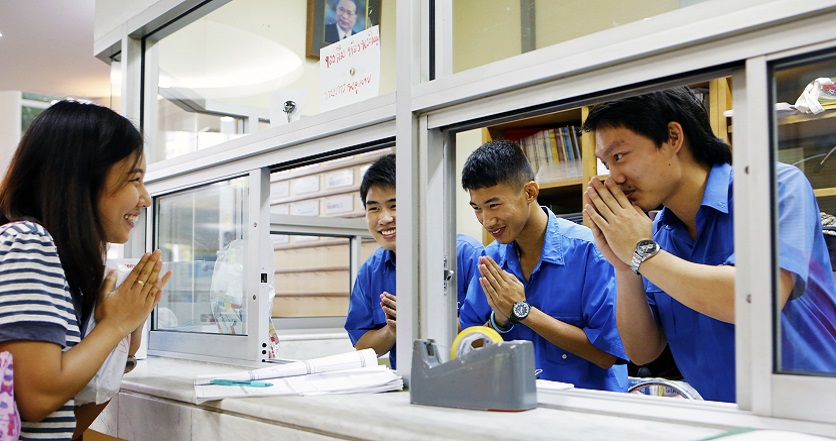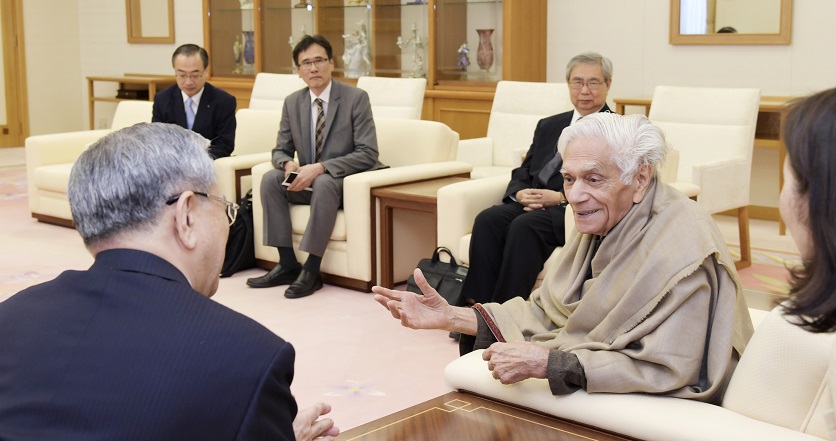Who Is a Buddha?

To many, the image conjured up by the word Buddha is of an otherworldly being, calmly remote from the matters of this world. Through meditation he has attained the state of “nirvana” which will enable him to escape this world and its constant sufferings—the fruit of human delusion and desire.
However, this image does not reflect the truth about the life of Shakyamuni, the founder of Buddhism who lived in India around 2,500 years ago. He was a deeply compassionate man who rejected the extremes of both asceticism and attachment, who was constantly interacting with others and wanted all people to share the truth he had discovered.
The literal meaning of Buddha is “enlightened one.” Enlightenment is a fully awakened state of vast wisdom through which reality in all its complexity can be fully understood and enjoyed. Any human being who is awakened to the fundamental truth about life can be called a Buddha.
The Lotus Sutra explains that Buddhahood is already present in all life.
However, many schools of Buddhism have taught that enlightenment is only accessible after an arduous process undertaken over unimaginably long periods of time—over many lifetimes, in fact. In dramatic contrast, what is considered Shakyamuni’s ultimate teaching, the Lotus Sutra, explains that Buddhahood is already present in all life. It teaches absolute equality and emphasizes that even within the life of a person apparently dominated by evil, there exists the unpolished jewel of the Buddha nature. No one else gives it to us or judges whether we “deserve” it.
As with gold hidden in a dirty bag, or lotus flowers emerging from a muddy pond, we have first to believe our Buddha nature is there, then awaken and develop or “polish” it. In Nichiren Buddhism this can be done through devotion to the law contained in the Lotus Sutra and the chanting of the phrase “Nam-myoho-renge-kyo.”
But Buddhahood is not a static condition or a state in which one can rest complacently. Rather, it is a dynamic experience and a journey of continual development and discovery.
When we continually reinforce the Buddhahood in our lives, we come to be ruled less and less by selfishness (or greed), anger and foolishness—what Buddhism terms the three poisons. As we fuse our lives with the enlightened life-state of the Buddha, we can tap the potential within us and change ourselves in a fundamental way.
As this inner state of Buddhahood is strengthened, we also develop a fortitude which enables us to ride even the wildest storms. If we are enlightened to the true, unchanging nature of life, we can joyfully surf the waves of difficulty which wash against us in life, creating something of value out of any situation. In this way our “true self” blossoms, and we find vast reserves of courage, compassion, wisdom and energy or life-force inside us. We find ourselves becoming more active and feeling deep inner freedom. And as we experience a growing sense of oneness with the universe, the isolation and alienation that cause so much suffering evaporate. We lessen our attachment to our smaller egotistical self, to difference, and become aware instead of the interconnectedness of all life. Gradually we find our lives opening up to those of others, desiring their happiness as much as our own.
However, while it is easy to believe that we all possess the lower life-states outlined in Buddhist teachings (hell, hunger, animality, anger and so on), believing that we possess Buddhahood is much more difficult. But the struggle to develop and constantly strengthen this state within our lives is well worthwhile.
For, in the words of Daisaku Ikeda, “[Buddhahood] is the joy of joys. Birth, old age, illness and death are no longer suffering, but part of the joy of living. The light of wisdom illuminates the entire universe, casting back the innate darkness of life. The life-space of the Buddha becomes united and fused with the universe. The self becomes the cosmos, and in a single instant the life-flow stretches out to encompass all that is past and all that is future. In each moment of the present, the eternal life-force of the cosmos pours forth as a gigantic fountain of energy.”
Courtesy July 1998 issue of the SGI Quarterly.







